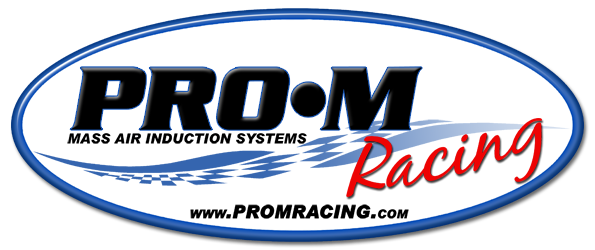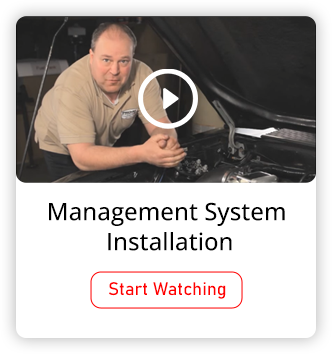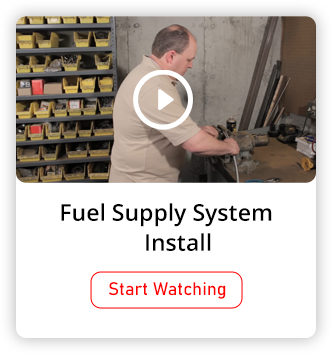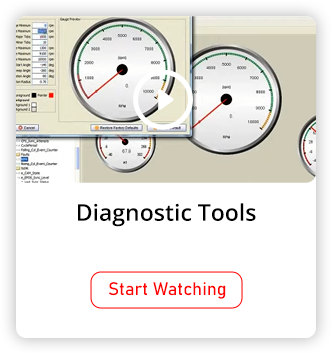Pro-M Racing Cold Air Facts
Does your application require a "Cold Air" calibration? This page will answer that question, as well as educate you about how a cold air kit will affect your mass air meter.
A cold air kit is a simple and effective way to increase horsepower. Cold air kits direct cool air from outside the engine compartment to the engine's induction system. Our "Cold Air" mass air meters have a special calibration meant to be used with these kits. Our "Cold Air" meters also come equipped with an air inlet screen. This will be explained later on this page.
First, let’s go over the different types of cold air kits:
Type 1:
The first, and most common cold air kit, has an elbow attached to the front of the mass air meter. This elbow directs cold air from outside the engine compartment into the mass air flow meter inlet. Our "Cold Air" meters are specially calibrated for this type of cold air kit. If you are using this type of cold air kit, you should order a meter with a "Cold Air" calibration.
Type 2:
The second type of cold air kit positions the mass air meter out in the fender well, with a conical filter attached directly to the front of the mass air meter housing. This type of cold air kit requires no special calibration for the mass air meter. If you are using this type of cold air kit, you should order a meter with a normal calibration.
Type 3:
The third type of cold air kit consists of a conical filter attached directly to the front of the mass air meter housing, and an enclosure around the filter. This enclosure is ducted into the fender well, and supplies cold air to the outside of the filter, which will be drawn into the filter, and of course the engine. This type of cold air kit requires no special calibration for the mass air meter. If you are using this type of cold air kit, you should order a meter with a normal calibration.
Type 4:
The forth type of cold air kit is not really a cold air kit at all, although they are commonly advertised as such. These kits consist of a conical filter attached directly to the front of the mass air meter housing with no ducting of any kind to retrieve air from outside the engine compartment. If you are using this type of cold air kit, you should order a meter with a normal calibration.
As mentioned earlier, our meters with cold air calibration are shipped with an air inlet screen. If the meter has a flange, the screen is incorporated into a gasket to be used between the flange on the front of the meter, and the flange on the cold air kit. If the meter does not have a flange, then the screen is incorporated into a “band” that will be installed on the front of the meter. The silicon hose that attaches the cold air kit to the inlet of the meter is to be installed over this band. This air screen must be used!
So why the screen? Our testing has revealed some interesting facts. Let’s look at the factors that affect the meter’s calibration.
1. There are numerous different shapes of inlet elbows being sold by the different cold air kit manufacturers. This ‘shape’ of the elbow greatly affects the calibration of the meter. --- Here’s why… The use of an elbow causes the air to “roll” as it comes around the turn. This rolling air creates pockets of turbulence that pass by the MAF sensing element. This turbulent air creates an inaccurate voltage output, which is interpreted by the PCM (engine computer), as an inaccurate amount of intake air. Other mass air meter manufacturers have attempted to solve this problem through “Cold Air” calibrations, but the fact is, there are too many variables for that method to be consistently effective. Different elbows with different shapes will cause different levels of turbulence. The air screen solves this problem. As the turbulent air passes through the screen, the air is “smoothed”, eliminating the turbulence. This allows the MAF meter to generate an accurate voltage signal to the PCM based upon an accurate measurement of that air mass passing through it.
2. The distance of the elbow from the inlet of the MAF meter affects its calibration. --- The longer the distance between the elbow and the MAF meter, the more time the air has had to settle down. Again, this factor is rendered irrelevant by using the inlet air screen.
3. The orientation of the elbow (in other words, the direction the elbow points in relation to the meter) also affects how the meter should be calibrated. --- The direction of the elbow determines the direction of the “roll” effect in the air. MAF meters supplied by other manufacturers are greatly affected by as little as a few degrees in rotation of the direction of the elbow! Again, since the screen eliminates this turbulence, the direction of the elbow has no significant affect on the MAF meters calibration.
Other Facts of Interest…
You might assume that the screen would be somewhat of a restriction. Our testing has confirmed that, in ‘cold air’ applications, the meter will actually flow considerably more air with the air screen than without. When turbulence is present, the air is scattered in many directions, which will serve to fight the flow of air through the meter. The air screen removes this turbulence, allowing the smoothed air to flow more freely, which results in improved air flow.
Due to the smoothing effect of the air screen, signal “noise” is also virtually eliminated. Other companies MAF meters calibrated for use with ‘cold air’ kits will commonly have an undesirable amount of this “noise”.







